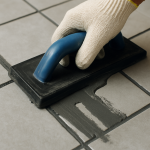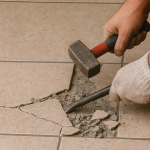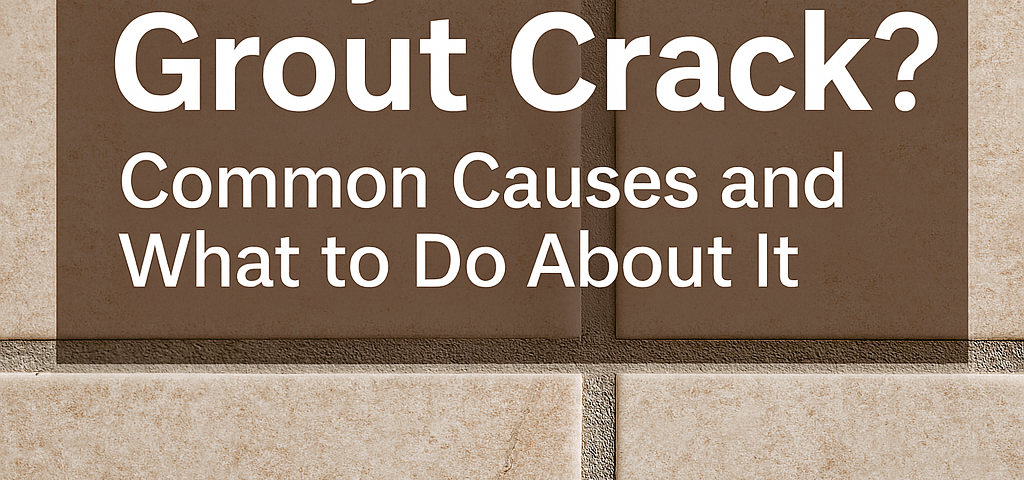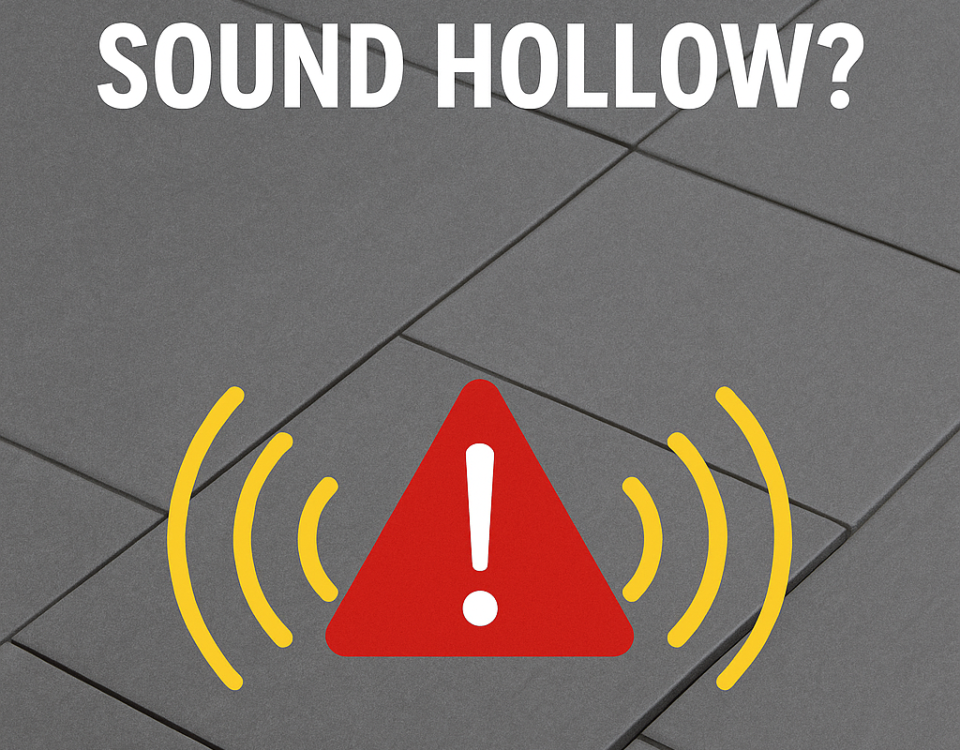
The Truth About Grout: Sand Based vs Epoxy
June 27, 2025
What’s Involved in Removing Old Tiles Before a New Installation?
August 1, 2025Cracked grout might seem like a small issue, but it can lead to bigger problems, especially in wet areas like bathrooms, kitchens, and showers. At Ray Tiling, we often get called in to fix cracked grout, and in many cases, it is a sign that something more is happening beneath the surface.
In this post, we explain why grout cracks, when it is just cosmetic, and when it means your tiles need deeper attention.
Why Do Tiles Move and Cause Grout to Crack?
Cracked grout is often a warning sign that the tiles are moving. While grout is meant to fill the spaces between tiles, it is not designed to hold them in place. If tiles are shifting, it usually means there is a problem with how they were installed or with the surface underneath.
Here are the most common reasons for tile movement:
Incorrect or Incomplete Priming
Before adhesive is applied, the surface must be properly primed. If this step is skipped or done incorrectly, the glue may not bond well to the substrate, leading to weak spots and future movement. This is especially important when a waterproofing membrane is involved. Failure can occur below the membrane if the substrate was not sealed properly, above the membrane if the surface was not primed before tiling, or in both areas.
To avoid these issues, we always recommend using a certified waterproofer. At Ray Tiling, all waterproofing work is carried out by trained professionals who understand the correct preparation steps for each layer. This ensures that the membrane bonds properly and that your tiled areas stay protected against movement and moisture damage over time.
Lack of Back-Buttering Where Needed
When using large tiles or working on uneven surfaces, it is often necessary to apply adhesive to the back of the tile as well as the floor or wall. This process, called back-buttering, helps achieve full coverage and a stronger bond. If skipped, air pockets or hollow spots may form, which can eventually lead to tile movement and grout cracking.
Delayed Installation After Spreading Adhesive
Tile adhesive has a specific working time. If tiles are not placed soon after the adhesive is spread, a skin may form on the surface. Once this happens, the adhesive cannot properly bond to the tile, increasing the risk of loosening over time.
Not Enough Adhesive or Uneven Coverage
If the wrong trowel size is used or if the adhesive is applied too thinly, the tile may not have full contact with the surface. These unsupported areas can flex under pressure, which puts stress on both the tile and the grout above it.
A Flexible or Unstable Substrate
Even if the adhesive is applied correctly, a weak or unstable surface below the tile can still cause problems. Substrates that shift or flex underfoot will eventually lead to tile movement and cracked grout.
This is especially common with timber floors, which naturally expand, contract, and flex with moisture and temperature changes. To prevent this, we always recommend installing tile underlay over timber before tiling. Tile underlay creates a stable and rigid base that supports the adhesive and tiles properly. It reduces movement, improves bonding, and helps protect your tiled surface from cracks and lifting over time. This extra step makes a big difference in the long-term durability of your floors or walls.
What to Do if You Notice Cracked Grout
Cracked grout is not always a major issue. In some cases, small surface cracks develop gradually from normal wear and tear, especially in areas that get used every day. However, if the cracks are getting worse, appear shortly after installation, or are accompanied by loose tiles, they could be a sign of deeper problems such as poor adhesion or substrate movement.
At Ray Tiling, we take the time to investigate what is really going on before suggesting a solution. Whether you need regrouting, tile repair, or a full inspection, we will give you straightforward advice and deliver a quality result.
If you are unsure about the grout in your bathroom, kitchen, or flooring, get in touch and we will be happy to take a look and guide you through the best next steps.
Contact us here for a quote or expert advice.




